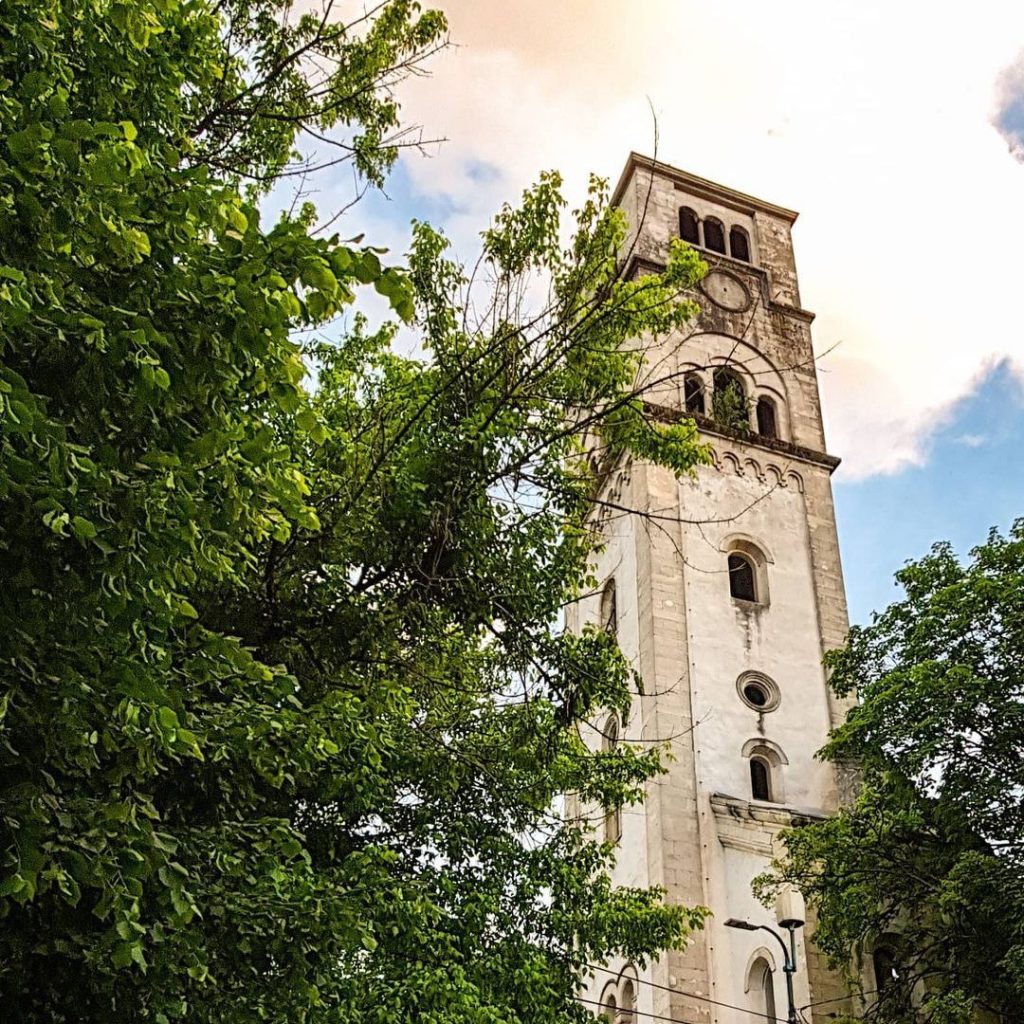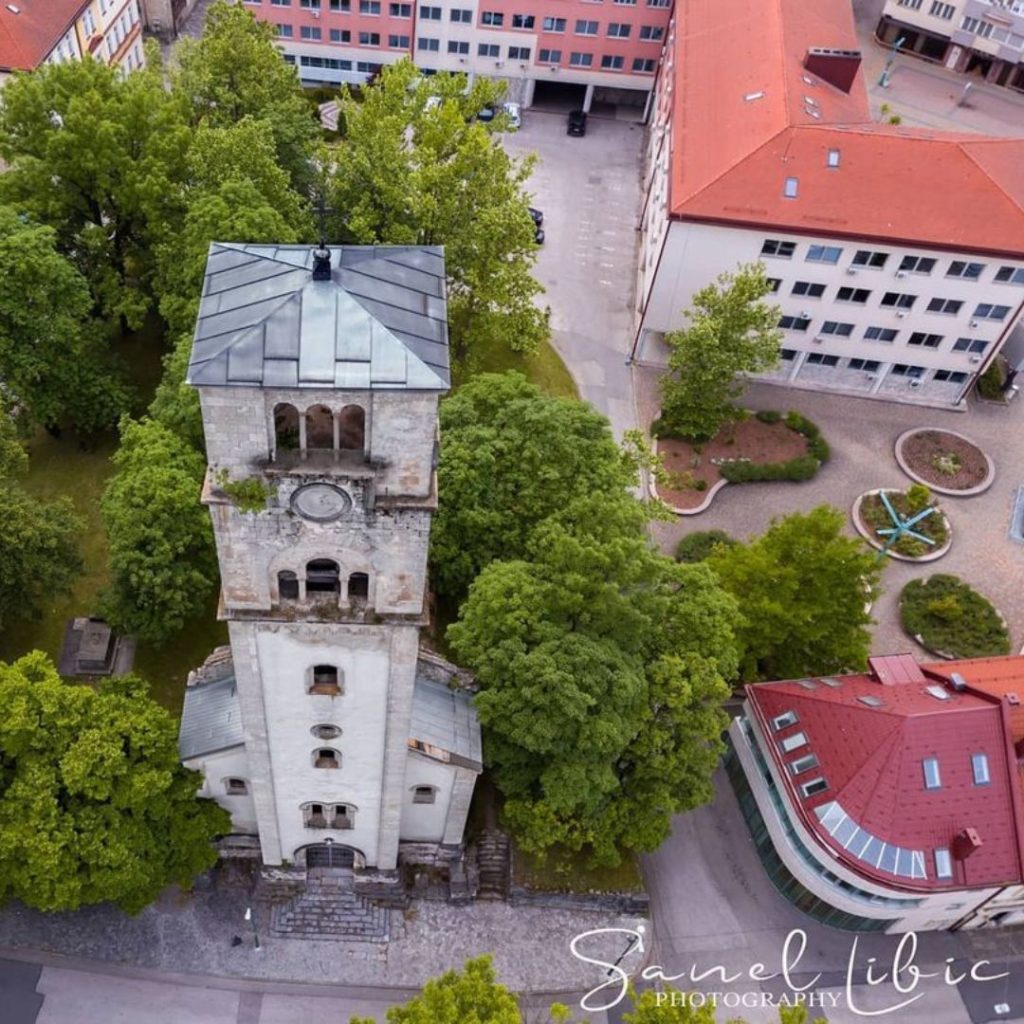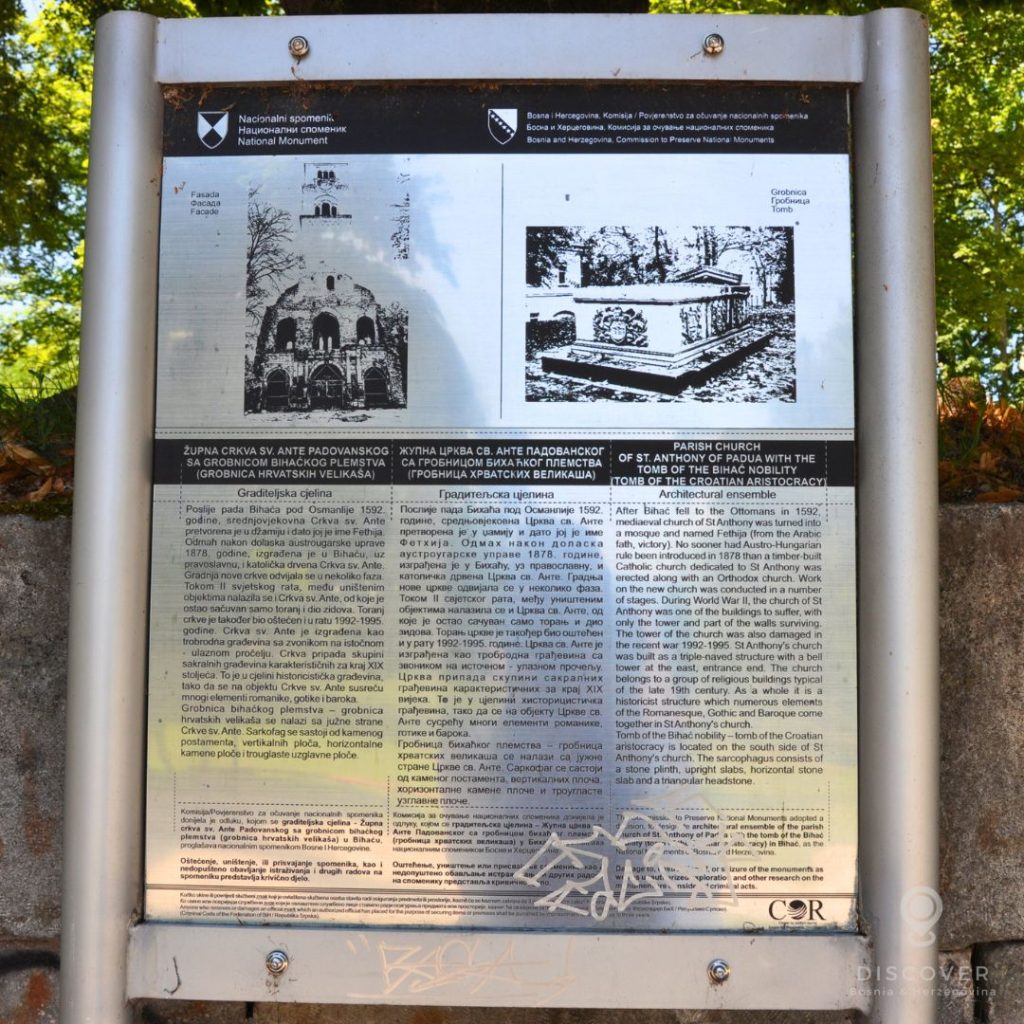
St. Anthony’s Church, constructed at the end of the 19th century and completed in 1894, is a significant religious landmark in Bihać. It is believed to have been built on the site of a demolished medieval church. The Catholic church stands out among the various sacral structures in the region and boasts an impressive spatial design and decorative elements.

The church’s imposing appearance, even by the standards of its time, is noteworthy. Spanning approximately 900 square meters, it features a tall rectangular bell tower, making it a dominant presence in the city’s urban landscape alongside Fethija Mosque and the Captain’s Tower.
However, the church underwent transformations during World War II. In 1941, the authorities ordered the demolition of the Orthodox church in the city, using its materials for the expansion of St. Anthony’s Church. An additional floor was added to the bell tower, and the church was extended to assume a cross-like shape.

As one of the largest churches in Bosnia and Herzegovina, it stretches an impressive 58 meters in length. During a bombardment by Allied forces in 1944, the church suffered significant damage, leaving only the square tower with its bell tower standing as a testament to the ravages of war. Today, it serves as a poignant reminder of the resilience and endurance of the church and the city itself.

The Bihać Sarcophagus, also known as the Tomb of Croatian Nobles or the Tomb of Bihać Nobility, is a significant historical site with deep roots. It was originally constructed in the late 19th century, following the Austro-Hungarian occupation of Bosnia and Herzegovina, as part of the newly built St. Anthony of Padua Church in Bihać. This remarkable sarcophagus serves as the resting place for the remains of nine prominent individuals from Bihać who courageously defended the city against the Ottoman army during the early 16th century.
These Croatian nobles were initially interred within the wall of the old St. Anthony of Padua Church, which was later transformed into the Fethiye Mosque by the Ottoman forces after their conquest of Bihać in 1592. Subsequently, the mortal remains were relocated to a nearby plot following the construction of the new mosque. After almost three centuries, the remains found their final resting place within the beautifully crafted sarcophagus.

Among the notable figures laid to rest in the Bihać Sarcophagus are Nikola Farkašić (1519), Ivan Bucković (1520), Bernardin Stivković (1523), Luka Cvitković (1524), Ivan and Gašpar Kobašić (circa 1531), Petar Rebrović (after 1531), Luka Bihaćanin (before 1551), Juraj Šubić (1560), and Ivan Izačić (1565).

Recently, artist and master craftsman Tomislav Turkalj painstakingly recreated the devastated reliefs and crafted a replica of the Bihać Sarcophagus during the winter and spring of 2009. This remarkable work allows visitors to appreciate the historical significance of this cultural treasure and delve into the rich heritage of Bihać.

